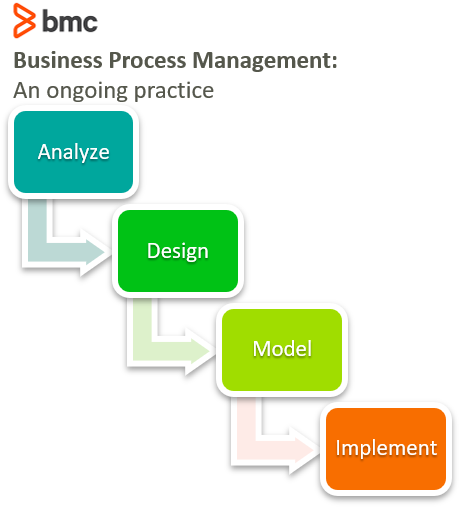Operating a business has never been a simple task. Modern advancements provide the chance for previously unheard-of levels of operational optimization and data insight. The tools available to today’s business owners are nearly limitless, which can be equal parts boon and bane. There are tools available for managing every aspect of a business, from inventory to customer service, taxes to time cards. Each piece of software added to the company’s technology stack helps carry managers’ burdens—while adding to the complexity of your organization.
Progress and complexity often go hand-in-hand. This is especially the case for technological progress. The good news: while systems are becoming more complex, they are also becoming more efficient and accurate.
That doesn’t stop the complexity from creating hurdles. One of the most cumbersome hurdles when working within a complex system is analyzing its optimization. Each moving part plays a role that can be difficult to assess and the parts themselves may have unnecessary bloat within them.
This is where business process management (BPM) can be introduced to help ensure organizations are making the most of their resources.
What is business process management?
Put simply, business process management is the method by which organizations manage and improve their processes. BPM involves:
- Analyzing each process in a vacuum
- Considering the part each process plays in the big picture of the business
BPM is all about fine-tuning processes to squeeze out every drop of optimization possible. This could be as easy as removing a redundant step in a process or as complicated as rebuilding the entire process from the ground up.
Before we dive further into business process management, it’s important we first define what a process is within this context.
What is a business process?
A process is a series of well-defined, repeatable steps that achieve a predictable result.
Repetition is the key aspect of business processes. They should be performed with regularity and done more or less the same way each time.
Processes aren’t the same thing as projects or tasks:
- Projects are single instances of a specific job. When executing on a project, the goal is to achieve a singular, one-time result.
- Tasks are the individual chores or pieces of a project that need to be completed for the project to be considered complete.
- Processes are jobs that are performed on a regular basis, such as new employee onboarding, addressing customer complaints, or making sales.
Equipped with the understanding of what a business process is, we can get back to BPM’s role within a business.
How does BPM work?
Business process management, as a discipline, attempts to look at every process your organization performs in two simultaneous ways:
- As a discrete, isolated job
- As a piece of the larger, organizational puzzle
Employing BPM techniques and tools requires the ability to look at the business on a micro and macro scale in tandem. Each process should be optimized within itself, but the impact it has on other processes or activities must also be considered.
BPM is a constant cycle that involves four primary steps: analyze, design, model, and implement.

Analyze
Each business process is analyzed for its effectiveness and optimization. The goal of this stage is to monitor operations and identify opportunities for improvement. Analysis involves going over each process with a fine-toothed comb to see what’s working and what isn’t.
The analysis stage is an ongoing process that must always keep the big picture in mind.
Design
Once opportunities for improvement have been identified, BPM professionals begin developing ideas for how to best solve the problem or optimize the process. This is the time for creating lofty goals and setting sights high. Processes should be designed as an ideal version of themselves during this stage.
Model
Next, put the designs into action or simulate how the proposed changes would impact the process and the entire system. Techniques for modeling can vary depending on the process that is being refined but prototyping or performing test-cases are always a great way to see how the proposed changes will impact operations. This step is essential for refining the design ideas and solidifying concepts into actionable changes.
Implement
Once the modeling has proven that the proposed changes have a positive impact on the process and the business at large, it’s time to implement the modifications and put all the pieces back together. Implementation of new processes or modified processes can be a difficult task, but if the stages prior to this were successful, then you know the effort is worth the end result.
Once implementation has been completed successfully, it’s time to start back from the top all over again. The only way to survive in today’s competitive environment is by constantly improving and doubling down on past success. The BPM process itself can be made easier through the use of BPM suites or systems (BPMs) that help organizations gain the insight they need into their processes to make informed decisions.
Intelligent Business Process Management Suites (iBPMS) is the newest, most advance solution type to help you succeed at BPM.
Business Process Management: Seeking perfection
BPM is all about making the best of a situation while constantly looking for avenues of improvement. Those who practice BPM realize that perfection is impossible but the pursuit of perfection is essential all the same. Businesses stagnate when they stand still, and properly executed BPM constantly pushes organizations towards new horizons.
BPM attempts to create optimized processes that employ the power of automation to enhance productivity and accuracy while reducing wasted time and effort. Business process management is not just about injecting automation into processes. It’s also about designing and implementing automation when viable, while realizing when alternative solutions are most effective. BPM systems can help organizations understand their ultimate potential, but true progress can only be realized with the help of passionate, skilled people who are driven by creating meaningful change.
Additional resources
For related reading, explore these resources:
- BMC Business of IT Blog
- Business Process Modeling Notation (BPMN): Getting Started with Visualization
- Continuous Innovation: A Brief Introduction
- BPM vs Workflow Management vs Case Management
These postings are my own and do not necessarily represent BMC's position, strategies, or opinion.
See an error or have a suggestion? Please let us know by emailing blogs@bmc.com.






